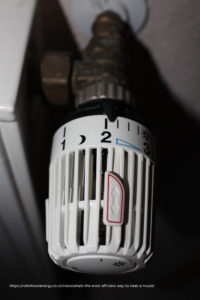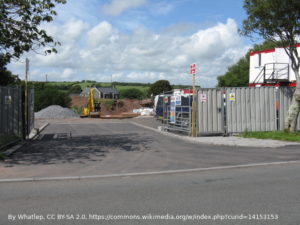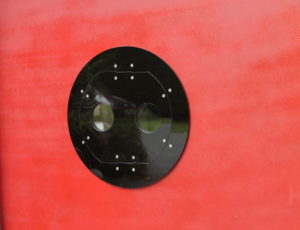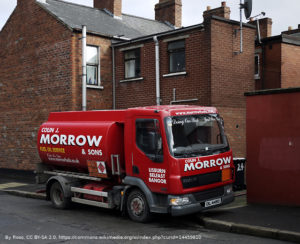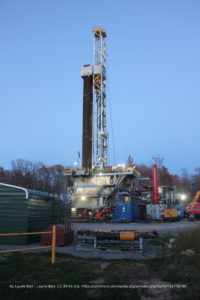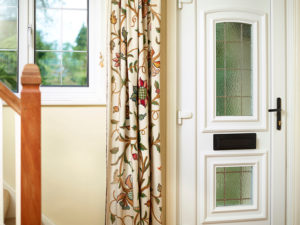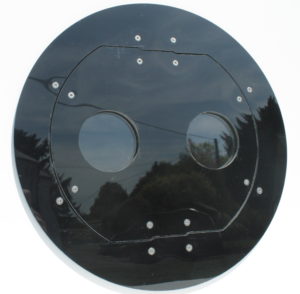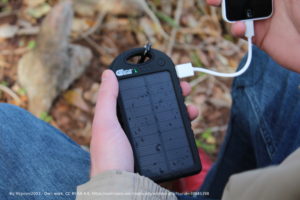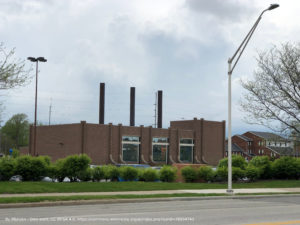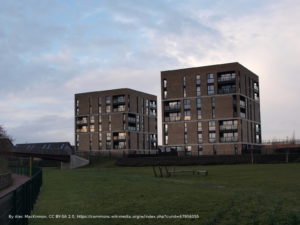
LEED
Welcome to LEED: The Energy Efficiency Podcast – episode 13, the podcast that brings you a mix of energy efficiency news, products and tips all year round. We’re interested in profiling people and products involved in promoting energy efficiency habits, products and information, so please do get in touch if you have something to contribute.This week: LEED, another green building accreditation scheme. How does it differ from BREEAM? City bike hire – is it an environmental and health success? And energy efficiency in the music industry – is it hitting the right note?
Heating

But before we get on with our advertised features, there have been a couple of articles recently about heating homes from local waste or untapped heat. A project in the east end of Glasgow is looking at the potential for heating homes with geothermal energy from untapped mine water. The project is expected to continue for 15 years. It’s funded by the Natural Environment Research Council (NERC) and the British Geological Survey (BGS) as part of the £31 million UK Geoenergy Observatories Project.
Across the UK about 9 million buildings, that’s a quarter of all UK homes and businesses, sit on former coalfields. Boreholes are being dug into flooded mine workings as part of the Glasgow project. They will be monitored to provide data on water movement, temperature and water chemistry as well as changes to the chemistry and physical and microbiological properties just below the surface.
The Coal Authority believes there is enough geothermal energy in coal mines to heat millions of homes. It’s creating a map of potential mine water resources. Systems like this are already in use in other countries, and the Glasgow project is intended to see how much more widely this form of heating could be used. It has potential as a heat store, something which has been a real challenge for renewable heat systems. A similar project is underway in Stoke, and there is even potential for extracting heat from the Clyde.
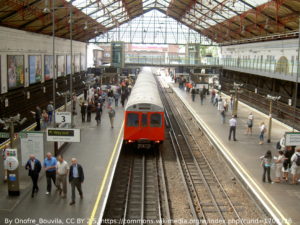
In north London, a scheme is underway to pump heat from a ventilation shaft in the tube network to homes and businesses in Islington by the end of this year. The homes and businesses that will benefit from this scheme are part of a heating scheme in Islington. At the moment 800 or so homes are heated by the Bunhill Energy Centre, a combined heat and power plant which for seven years has provided heat to council houses, schools, a swimming pool and a leisure centre. It generates electricity, and uses the heat that is a by-product to supply hot water.
The new addition to the scheme uses heat that would otherwise be wasted. An additional 450 homes will benefit. In summer, the system will be reversed to introduce cool air into the tube tunnels. It’s hoped this model can be replicated across London. The GLA reckons heat currently wasted could meet nearly 40% of London’s heating requirements.
LEED
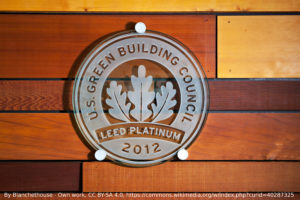 Last week we looked at BREEAM sustainable building accreditation. This week we cast our eye over LEED: Leadership in Energy and Environmental Design. One instant difference between the two is that where BREEAM was developed by a British organisation, the Buildings Research Establishment, LEED is an American development.
Last week we looked at BREEAM sustainable building accreditation. This week we cast our eye over LEED: Leadership in Energy and Environmental Design. One instant difference between the two is that where BREEAM was developed by a British organisation, the Buildings Research Establishment, LEED is an American development.
Other countries have their own systems too, such as Green Star in Australia and Assessment System for Built Environment Efficiency in Japan. Described by Wikipedia as “one of the most popular green building certification programs used worldwide”, LEED was developed by the US Green Building Council (USGBC).
Categories
Similarly to BREEAM, LEED is based on a ratings systems for design, construction, operation and maintenance of buildings aiming to be environmentally sound and efficient in use of resources. The main categories are Sustainable sites, Water Efficiency, Energy and Atmosphere, Materials and Resource, and Indoor Environmental Quality. In 2009 Regional Priority points were added, to take into consideration country-specific climates and availability of natural resources. This feature is contentious and research suggests it’s inconsistently applied.
Interestingly, LEED was initially kickstarted by Robert Watson, a scientist from the Natural Resources Defense Council, an environmental advocacy group. Over the next few years a broad base of professionals developed LEED. Like BREEAM, LEED’s remit has widened since it first began. It has had to incorporate new green building technologies. LEED standards, which include the social and economic aspects of a project, have now been applied to well over 80,000 projects worldwide.
Points
LEED allocates points to a project “based on the potential environmental impacts and human benefits of each credit”. It assesses these using standards set by other American organisations. However some categories attract no credits as they are mandatory for any project pursuing LEED certification. The owner of a building must share its energy and water use data for five years. A project being assessed for LEED certification is measured against a set of reference buildings. Empirical data is used to assign points to categories. From 2010 buildings have been able to use carbon offsets to achieve Green Power Credits for new builds.
So far so similar, but not identical, to BREEAM. BREEAM came first, just, and because it works closely with British building codes it is less widely used internationally than LEED. LEED is now gaining more traction in the UK and is far more widely used internationally than BREEAM. Countries outside the UK using BREEAM have to adapt it to their building codes. LEED doesn’t work with specific building codes but overlays them. This makes it far more easily applied internationally.
LEED is more frequently revised than BREEAM and encourages innovation, which could make it more effective than BREEAM at achieving its aims. Due to LEED’s international profile, a developer in the UK looking to attract foreign money to a project would be advised to use LEED. Buildings gaining a high LEED score will do well under BREEAM, but buildings achieving a high BREEAM rating may not score quite so well under LEED.
Certification
One of the key differences between the two systems is the method of certification. Under BREEAM, a licensed assessor collects a building’s data and submits it to the parent organisation, the BRE, for assessment. With LEED, the design team collects the data, which sends it to the USGBC for review. The two schemes have slightly different priorities and structures. BREEAM is considered to be more structured which appeals to some developers and delivers something they value, whereas LEED offers more freedom which encourages innovation but requires more in-depth and individual assessment and monitoring. Perhaps for this reason it’s considered less hassle to go for BREEAM certification than LEED.
The Clarus website suggests that BREEAM looks more closely than LEED at the processes behind speccing a building. Where LEED will assess the sustainability of eg a window, BREEAM will audit the emissions and sustainability in the supply chain that went into producing that window. BREEAM prioritises responsible production rather than just a responsible finished product. This is a fine but really vital distinction.
Putting these differences aside, BREEAM, LEED and all the other green building intitiaves are broadly pursuing the same end – sustainable, energy efficient buildings that deliver benefits for the owners, the occupants and the neighbourhood. Some big names are going after that LEED badge.

Industrial buildings
Colgate-Palmolive aims to achieve LEED certification for all its new buildings globally. It created the first LEED-certified building in Vietnam, a factory outside Ho Chi Minh City. It’s also created the first LEED-certified building in India, another factory.
Growth in LEED certification of industrial buildings is slower than in its other categories as it’s not easy to achieve. As factories are such heavy users of raw materials they’re a prime candidate for LEED-type measures. Colgate-Palmolive wants to cut water usage by half and lead projects to reduce stress on water supplies in the areas where they operate. It has ambitious plans in all areas of energy efficiency, waste reduction and responsible sourcing. It sees that the projects it undertakes help to raise awareness in the industry and demonstrate what can be done.

But it’s not all about the new. Moseley Architects is a USGBC partner providing a full buildings design service that prioritises the green buildings ethos. 10 years ago it renovated its headquarters to LEED standards. The building is a 1930s industrial building in Richmond, Virginia, that is on the National Register of Historic Places. The NRHP is an official list of structures and areas “deemed worthy of preservation for their historical significance”. Listing on this is mostly symbolic, not carrying anything like the weight of listing here in the UK, and protection of the building is not guaranteed (but then it isn’t always here either).
LEED prioritised keeping the original skylights and garage doors to incorproate natural light, one of its goals. Preserving the historic building gained the project 12 credits. The project also included a rooftop garden, an outdoor view from every desk, finely-detailed water management and the use of rapidly renewable materials such as sunflower board.
BREEAM and LEED, the two leading internationally-applied standards, are similar but not interchangeable. If you’re looking for sustainability accreditation for a project it may be that one is more clearly appropriate than the other, all things considered. Pursuing either, or any other type of green acreditation, will benefit a project and those engaging with it in any capacity.
City Bike Hire
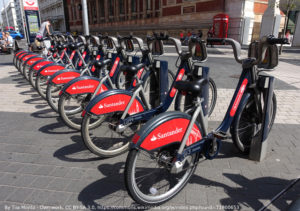
London’s scheme was originally suggested by Ken Livingston in 2007. At the moment in London the city bike hire scheme is known as Santander Cycles, previously Barclays Cycle Hire. It’s the second biggest bike share system in the world, second only to Paris, which incidentally London’s was modelled on. Curiously London’s scheme runs at a loss and takes taxpayer money, whereas Paris’ and Washington DC’s cover their costs, and that doesn’t include the cost of providing the bikes or docking stations. There are bike hire schemes running across the UK and worldwide. In fact pretty much every major city you care to mention has a bike hire scheme.
What we’re talking about today are hire it and leave it schemes. There are two main systems: docking bikes, which need to be returned to a physical docking station, and dockless, which you leave wherever you fancy within the operating zone and it’s logged on the app, so anyone nearby wanting to hire a bike can spot the nearest one. The latter are considered more convenient by riders and are cheaper than the Santander Cycles, but apparently the operating zones aren’t respected so bikes end up all over the place.
Aims
These schemes have a few aims. The bikes are brightly branded so they’re a great advertising vehicle and it helps a city with its look-at-me green credentials. Many people enjoy cycling and if you’re in a leafy or quieter part of London it could be a nice experience going at a slower pace instead of sitting in traffic. That’s a tourism selling point. Because you can dump the bike in a docking station it’s another way of travelling without needing to find and pay for a parking space. The docking stations and bikes themselves aren’t terribly intrusive to the streetscape and it can be far cheaper than any other form of transport in a city bar walking. In London in particular the bikes are intended for short journies so the pricing model encourages that. Frequent docking means there’s more likely to be a bike free for someone else who might want it.
This type of bike hire is totally unregulated, so any supplier wanting to join the market doesn’t have to get council approval. This can mean a couple of thousand bikes appearing on the streets overnight and causing a few headaches for the council. Wandsworth impounded over 1000 bikes which oBike put on its streets two years ago.
How many bikes are there in London?

Over 11,000-odd. A year ago ofo, a Chinese company, brought 2000 bikes to Sheffield at no cost to the taxpayer. Unfortunately there was a fair bit of vandalism and six months later ofo withdrew and scrapped plans for 150,000 bikes in London, although that is apparently part of company restructuring. Despite that, the rider figures were incredible – in three weeks Sheffield hit the figures it took London a year to achieve. Vandalism and theft were also very high, sadly.
The saddest part of Sheffield’s experience though is that prior to ofo arriving, Sheffield had a dock-based hire system funded jointly by the university and council. That wasn’t financially viable once ofo arrived so it folded, and there are no immediate plans to get it going again.
Private companies or councils?
There looks to be room for both, and advantages to be had from working together or covering different areas, but the private companies take big risks. Three have withdrawn from Britain in the last year. The private companies flash the venture capital cash, councils are far more cautious. They have different priorities, metrics and time scales. In the UK Lime, which provides electric bike hire, has just launched in parts of London, and Uber has brought its Jump bikes to Britain.
This is about achieving market dominance?
It looks like it and new companies are popping up all the time to get a slice of the action. Perhaps it’s significant that Uber, for instance, has waited to see what happens with other companies here in particular, before looking to enter the market.
Learning from other companies’ mistakes, or misfortunes.
That’s right. Providing the infrastructure – bikes and docks – is the exact opposite of what Uber does usually, so there’s a need for huge expenditure on both supplying bikes in the first place and then replacing them when they’re lost, stolen or vandalised.
Vandalism
It’s part of what has caused problems for ofo, and Mobike increased its charges in Manchester to help cover the costs, before withdrawing from the city. In Edinburgh only 200 of 500 bikes were available following a bad run of attacks, but then it has had the Fringe on there just recently. Derby ebikes, who believed they ran the UK’s biggest e-bike hire scheme, has shut down for good due to levels of vandalism.
The apps ofo and other companies provide show the location of bikes, and quite a few started showing up in rivers and canals. Occasionally this can mean that a bike’s parked by the river, but unfortunately there have been many instances of the bike actually being in the water.
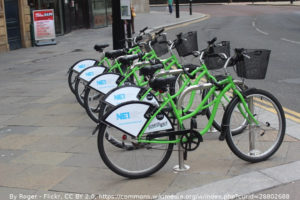
In San Diego, California, bikes belonging to all the main dockless hire companies have been found in local waters. Some areas are tolerant of this, seeing that overall the bikes do make a contribution to CO2 reduction, but others are getting tough with the bikes’ providers. Coronado, an area of San Diego, charges the companies $45 per bike retrieved. There’s criticisms that the companies aren’t responsive to requests to collect abandoned bikes. Lime Bike explicitly will not retrieve bikes that aren’t directly accessible, leaving it to the local authority.
This is the case in the UK too, where the Canal & River Trust says it’s pulling 100 bikes out of London’s canals every year. This takes up time and money that could be better spent on other projects. Some bikes damage boats during their sojourn in the water. As well as pulling out of Manchester, Mobike has suspends ops in Newcastle and Gateshead because so many bikes were ending up in the Tyne. Some London Boroughs are considering fining bike hire companies £500 a pop for abandoned bikes. Similar situations are cropping up across the USA, but at the same time the schemes are popular. It seems dockless bikes’ popularity and problems go hand in hand.
What’s the incentive for companies to retrieve their bikes?
Without fines, you might well ask. With hire so cheap is there an incentive? When you consider the manpower, fuel and vehicle wear and tear it takes to pull a bike from water or wherever it’s been abandoned, then the time, skills and infrastructure required to mend the bike, from a financial point of view there’s little in it for the hire scheme. Environmentally it’s a shocking waste. Since the Santander Cycles scheme increased security there are fewer of those bikes ending up in the water, so it’s the dockless sort that are the main problem.
Regulation
What needs to happen to see these schemes working well and delivering the benefits originally intended?
Regulation would be a good start. Companies would know the boundaries, literally, and they would all be in the same position. The Greater London Authority has proposed that TfL regulates London’s dockless system. There is still one private operator of dockless bikes in London, Mobike, but its operating area has shrunk. Yobike has small dockless schemes running in Bristol and Southampton. Those in the business describe this as a natural stage in development, a learning curve etc, and doesn’t mean the schemes are failing.
Should councils and companies work together?
There’s certainly scope for that, especially as the companies need councils’ goodwill. Currently, as in Wandsworth, the bikes are seen as a problem, but with the right regulation private business could play a big part in reducing an area’s congestion, to the benefit of the council.
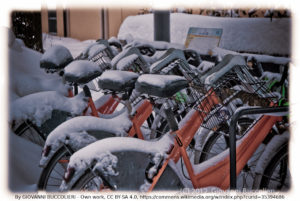
This is happening in Italy. Bologna’s council is working with Mobike so time will tell whether that proves to be a model other cities can follow. Lime is co-operating with the councils in its target area, looking for the warmest reception.
Environmental and health success story?
Not unequivocally. After a day of use bikes can end up in big groups in a few places, so they are usually redistributed. This involves a fleet of vehicles that have to load up the bikes and drive them somewhere else. One article I read suggested this ‘rebalancing’ is unnecessary and would happen by itself as the people who drove from say 10 different locations into central London would then do the journey in reverse later on. Apparently when the redistribution (which sounds Orwellian) drivers went on strike, the bikes carried on being used just fine. Electric Lime bikes are collected by staff for recharging every two days. On the upside this allows staff to keep an eye on the condition of the bikes. The hope with e-bikes is that the extra oomph will encourage more people to choose bike over car.
At the Royal Geographical Society conference a year ago, Dr Cyrille Medard de Chardon of the Unviersity of Hull said that the hire bike user profile is dominated by those already in good shape and affluent enough to afford to buy and maintain a bike of their own. The vans used to drive the bikes around offset any CO2 saving. The research Dr Medard de Chardon refers to says that this is likely to be the demographic across cycle schemes globally. The central locations of the schemes means those in outlying areas and more likely to be on a lower income, can’t easily benefit from the schemes. Dr Medard de Chardon suggests instead that the taxpayer money involved could have gone towards improvement in transport systems that everyone can benefit from.
Controversy
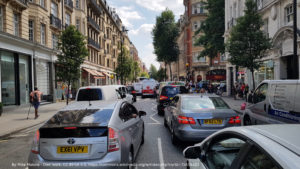
There’s controversy over cycle lanes increasing congestion for cars. Now you might say well so what, those people should leave the cars at home and use some other less polluting means of transport or get an electric car or van or what have you and yes, that argument has legs, but the main problem is that cars sitting in traffic pump out pollution, so all the while that people just damn well are going to use their cars and vans, the longer they’re sat on more congested roads, the worse for air quality.
Beryl Bikes
Cycle infrastructure is hot potato in Herefordshire just now, with the proposed bypass on, off again, maybe going somewhere else, and all encouraging car use in a medieval city that can’t cope with it. Personally I wouldn’t cycle on the roads round here, or want the children to, because you’re sharing the roads with massive agricultural plant on windy roads peppered with potholes. A network of cycle paths between our market towns and surrounding villages, to replace the rail lines long-gone, would be very welcome.
In Hereford itself Beryl Bikes operates a hire scheme in co-operation with the council. I haven’t noticed any of their green bikes around or seen any of the green parking bays, but I’ll look out for them next time I’m in.
Energy efficiency in the music industry
The music industry has the potential to consume a great deal of energy in different ways. On the face of it, streaming might look more environmentally friendly than pressing CDs or actual vinyl, but streaming uses vast amounts of energy as data centres provide the service. Is it more environmentally friendly to go to a concert or festival? The market is worth over £3bn so let’s take a look.
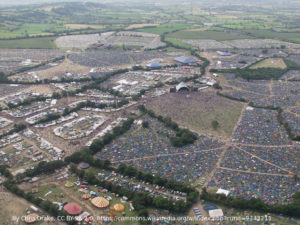
Plastic-free
Think festivals, think Glastonbury. This year the festival was to be entirely plastic-free, one hell of an aim. This was part of its theme this year, climate change and the environment. Sadly this year there was the usual ocean of litter left behind. While festival organisers didn’t allow any purchases to be provided in plastic, it couldn’t stop attendees bringing in eg plastic bottles. Considering it sold a million plastic bottles of water in 2017, selling none this year was still a big step. It even wheeled out Sir David Attenborough on to the Pyramid Stage to encourage festival goers to do their bit.
Renewables
Despite it taking over 1300 volunteers to collect the rubbish left behind, the organisers say that this year plastic waste has been drastically reduced. So that’s an improvement but still, in the end, there’s loads of rubbish to be disposed of. This isn’t an audit of Glastonbury, but it does encourage travelling to the site by public transport, it generates renewable energy from solar PV on a cattle shed roof, incidentally one of the largest privately-owned solar PV installations in the country. It generally has a proactive approach to renewable energy, also using wind and a ground souce heat pump.It’s installed an anaerobic digestor to power offices and backstage areas. Use of generators is being reduced, low energy lighting is installed, and attention is being paid to use local services for food and drinking water supply. The energy policy page on its site even reminds you to unplug things if the house is going to be empty while you’re at the festival. As a major player in the festival market, where Glastonbury leads others should follow.
Last week’s Reading Festival tackled another aspect of thousands of campers in one place for five days: human waste. Gas from pee and poo collected from the site will generate a gas used to power homes. Already Reading sewage works produces 50% of all the electricity it uses. The contractors just need to make sure that the tents, sleeping bags, mobile phones and beer cans that typically end up in festival loos are removed first. Something similar but on a smaller scale is on show at Glastonbury, provided by the University of the West of England Bristol.
Information and training
The EU identifies the music industry as lacking energy efficiency information and training, and financial schemes, so it has introduced EE Music, developed specifically to improve energy efficiency in the music event industry. It used workshops and training schemes to deliver information to over 2000 festival organisers, venue owners, supporters and attendees. EE Music has developed tools for delivering energy efficiency improvements in staging music events and launched EE Music in 10 countries. On its website EE Music describes itself thus:
“Over the last few years EU-funded project EE MUSIC organised workshops all over Europe to inform music professionals about the Industry Green (IG) tools i.e. a free calculator measuring the energy efficiency of a festival, club or venue; and comparing the energy data over time and within the music sector. “
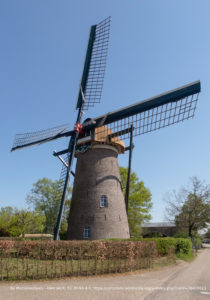
Cheap power
This is a small start, and initial findings show a very varied progress across EU countries. Eastern European countries, for instance, show little appetite for energy efficient music events, whereas The Netherlands applies established energy efficiency and sustainability measures. In Bulgaria, for instance, very cheap energy prices make going through an audit unappealling, so in Bulgaria and similar markets, including Czech Republic and Hungary, focus was shifted to other areas such as raising awareness and probing the market.
EE Music found that the music event industry is fragmented and overlaps with many other industries including tourism. It’s dependent on existing suppliers, so if there’s just one venue in an area, enthusiastic to reduce energy usage and/or find a source of renewable , it will struggle to make any impact. Many small venues and festivals otherwise interested in using EE Music’s guidance couldn’t access what they needed locally to make changes and couldn’t take their plans further.
Live Nation Entertainment, which describes itself as the world’s leading live entertainment company comprised of global market leaders, which includes Ticketmaster, Festival Republic and c3 Presents, has taken a stand through its project Empowering the Earth. Through this, its greenhouse gas emissions will align with the Paris Agreement. It intends to achieve this by reducing the environmental impact of its venues and events, taking care of the communities where it operates and inspire all those it comes into contact with to take similar action.

CDs and vinyl
Maybe concerts and festivals aren’t for you. Instead you stay at home and stream music. There’s no travel, no outside catering, no massive speakers or 5000 miles of electrical cable. It’s clearly far less energy intensive, but is it better than buying a CD or record? In an article earlier this year on April 13th, International Record Store Day, Energy in Demand reviewed this. Energy in Demand is a weekly online review of Low Carbon Energy Transition.
Music has shifted from a commodity industry to a service industry, and prices have plunged. Few of us now expect to pay a great deal for access to music stored in the cloud. The environmental cost however is huge. Plastic use has plunged from 58m kg in 1977 to 8m kg by 2016, but that pales compared to the energy used by the data centres delivering streamed music. These two different sets of data can be compared by translating them into greenhouse gas equivalents, or GHGs. In 1977 GHGs were 140m kg – it’s now over 350m kg, well over twice as much, and that’s just in the USA.
As Energy in Demand rightly points out, to make a crystal clear comparison we would have to take into account all sorts of factors including the energy used to make record players, ship CDs and records to shops etc, and this was years ago when polluting was normal. Then there are the emissions from recording studios and making musical instruments – the list really does go on. What we need to keep in mind is that today, when streaming music is a standard way of listening to it, the purchase price and the environmental cost bear no relation to each other.
What’s the answer?
Should artists take responsibility for using energy efficient methods to play, record and perform their music? Should consumers buy more records and stop streaming? Should streaming platforms and music labels ensure they use only the most efficient data centres to host their wares? Bear in mind that artists now make virtually nothing from sales and have to generate revenue through live performance.

FEAT
One group of musicians has decided to do something about it. Australian bands including Midnight Oil have joined FEAT, a platform encouraging the music industry to embrace sustainability. FEAT began when Heidi Lenffer, keyboard player with Cloud Control, considered the environmental cost of an upcoming tour. She approached climate scientists and worked with Dr Chris Dey to calculate the impact of a two week tour within Australia. Dr Dey calculated that the fortnight’s tour would produce emissions equivalent to that produced by an average household in a year. Given the distances involved in Australia the band flew between cities, and Leffner wanted something better than carbon offsetting. She believed her creative industry could find a solution
Her solution was to establish FEAT, Future Energy Artists, in partnership with superannuation fund Future Super and developer Impact Investment Group. Through FEAT musicians can build and invest in their own solar farms. The first is underway, an 80-hectare site in Queensland. The bands involved are investing for their future, literally and metaphorically, and they can invest from just $5. The Queensland site, Brigalow, can power 11,300 homes for 30 years, (or power 2000 Cloud Control tours). Artists can expect a return on investment of 5% a year. Leffner hopes this initiative, based on community solar projects in other countries, will catch on with musicians building the solar industry the world needs.
Green Riders is a campaign encouraging artists to include energy efficiency and sustainability measures in their touring conditions. Their website includes suggestions such as asking the venues you play at to switch to 100% renewable electricity, using refillable bottles to eliminate plastic bottled water for artist & crew and working with venues and promoters to help them go single-use plastic free and sustainable merchandise (including t-shirts, CDs, records).
Green Riders believe that if enough artists take action in this way, they can change the music industry. It’s supported by Julie’s Bicycle, a charity founded by the UK music industry. It supports the creative community to do something about climate change. It works with an impressive list of organisations including Arts Council England, the BRIT Awards and the Royal Albert Hall.

Many of the same issues face classical music, without the festivals. Orchestras spend a great deal of time touring, but Orchestra for the Earth goes to great lengths to minimise its carbon footprint as it fulfills its mission “that music can provide a fresh approach to engaging people with the environmental movement”. To this end it tours Europe in a coach rather than flying, which avoids losing instruments at baggage reclaim. This year the orchestra opened a nature reserve in Austria funded from donations made at concerts. All ticket sales include an element for planting a tree with the Eden Reforestation Projects, which works in countries including Haiti, Nepal and Madagascar to replace trees in deforested areas.
And what have we been up to? We’re looking at changes to our business model. We haven’t finalised them yet so we’ll share that when we’re ready. We’re still seeing good international sales so with Brexit on the horizon we recommend you buy while international shipping is still straightforward.
Thank you for listening to episode 13 of the Energy Efficiency Podcast. Until next time you can find us on both Twitter and Instagram as Ecoflap, and on Twitter we also tweet as The Petflap. In next week’s episode we’ll look at: the WELL standard, energy efficiency in public transport and the realities of recycling textiles.

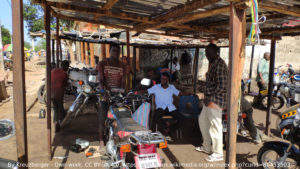

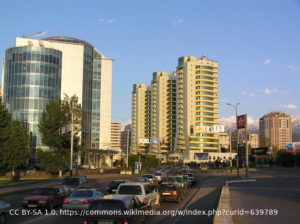

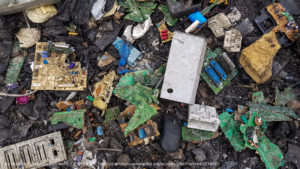
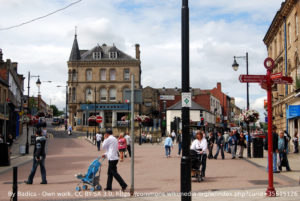
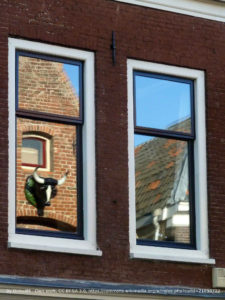
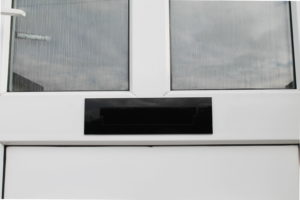
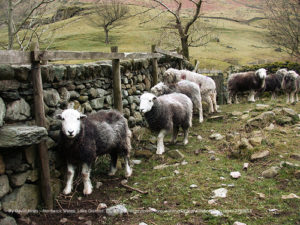
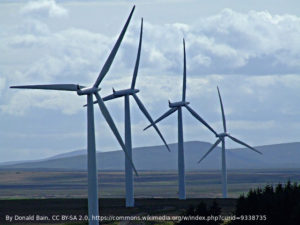
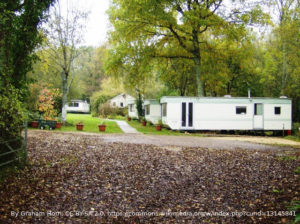
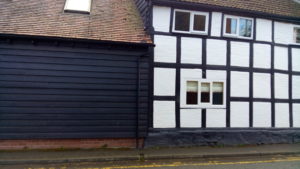




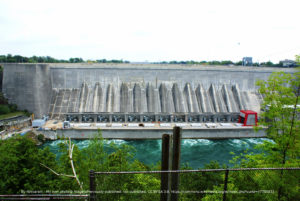
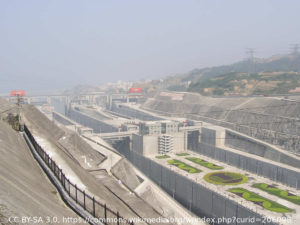
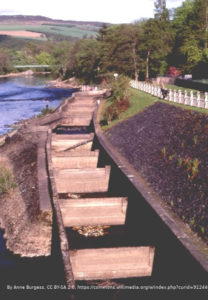
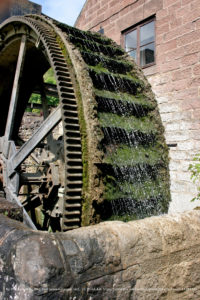
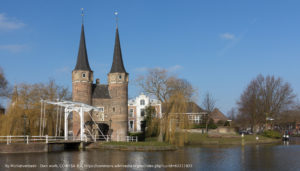


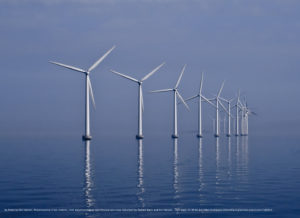

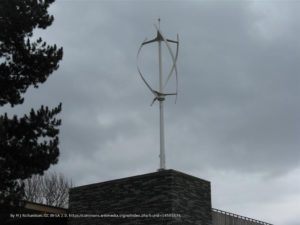

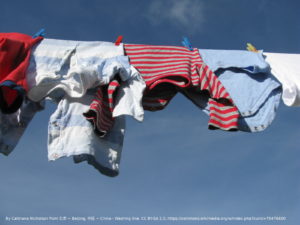



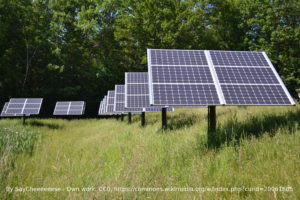
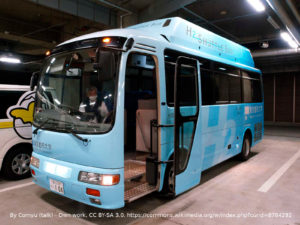
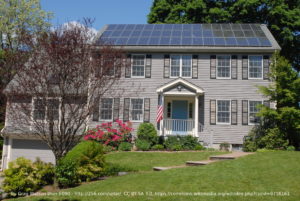
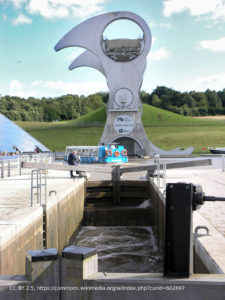


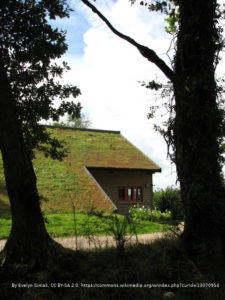
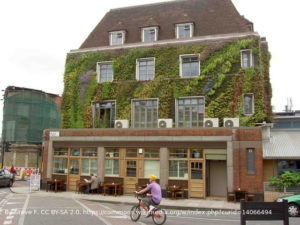
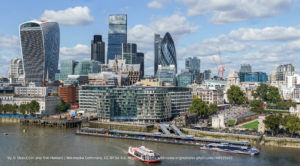
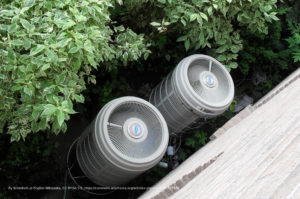 Welcome to Ground Source Heat Pumps: The Energy Efficiency Podcast – episode 7, the podcast that brings you a mix of energy efficiency news, products and tips all year round. We’re interested in profiling people and products involved in promoting energy efficiency habits, products and information, so please do
Welcome to Ground Source Heat Pumps: The Energy Efficiency Podcast – episode 7, the podcast that brings you a mix of energy efficiency news, products and tips all year round. We’re interested in profiling people and products involved in promoting energy efficiency habits, products and information, so please do 
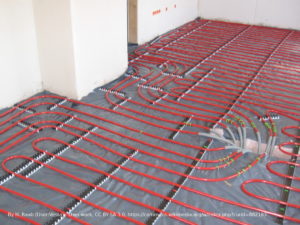
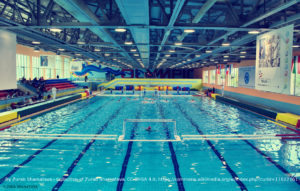


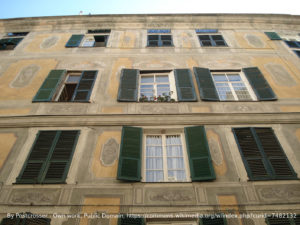
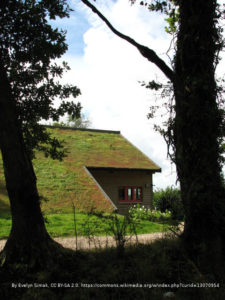
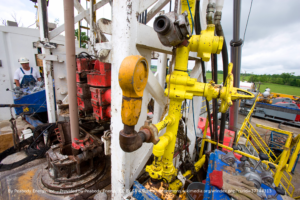
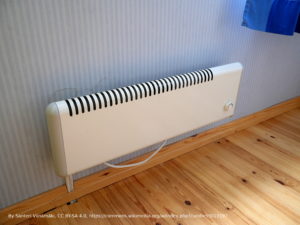
 Electric heating systems in older buildings, multi-occupancy and high rise buildings face increased stress than a standard single-household building. When electrical systems were fitted in buildings dating from eg the 1970/80s and back, there was less overall demand on the electrical system than there is now. Increased use of power hungry domestic applicances together with wipespread use of multiple tech devices in the average home draw a great deal more electricity than would have been common in a house in the 1950s. Together with many older houses having poor insulation, an older building heated solely by electricity could become quite expensive to power.
Electric heating systems in older buildings, multi-occupancy and high rise buildings face increased stress than a standard single-household building. When electrical systems were fitted in buildings dating from eg the 1970/80s and back, there was less overall demand on the electrical system than there is now. Increased use of power hungry domestic applicances together with wipespread use of multiple tech devices in the average home draw a great deal more electricity than would have been common in a house in the 1950s. Together with many older houses having poor insulation, an older building heated solely by electricity could become quite expensive to power.